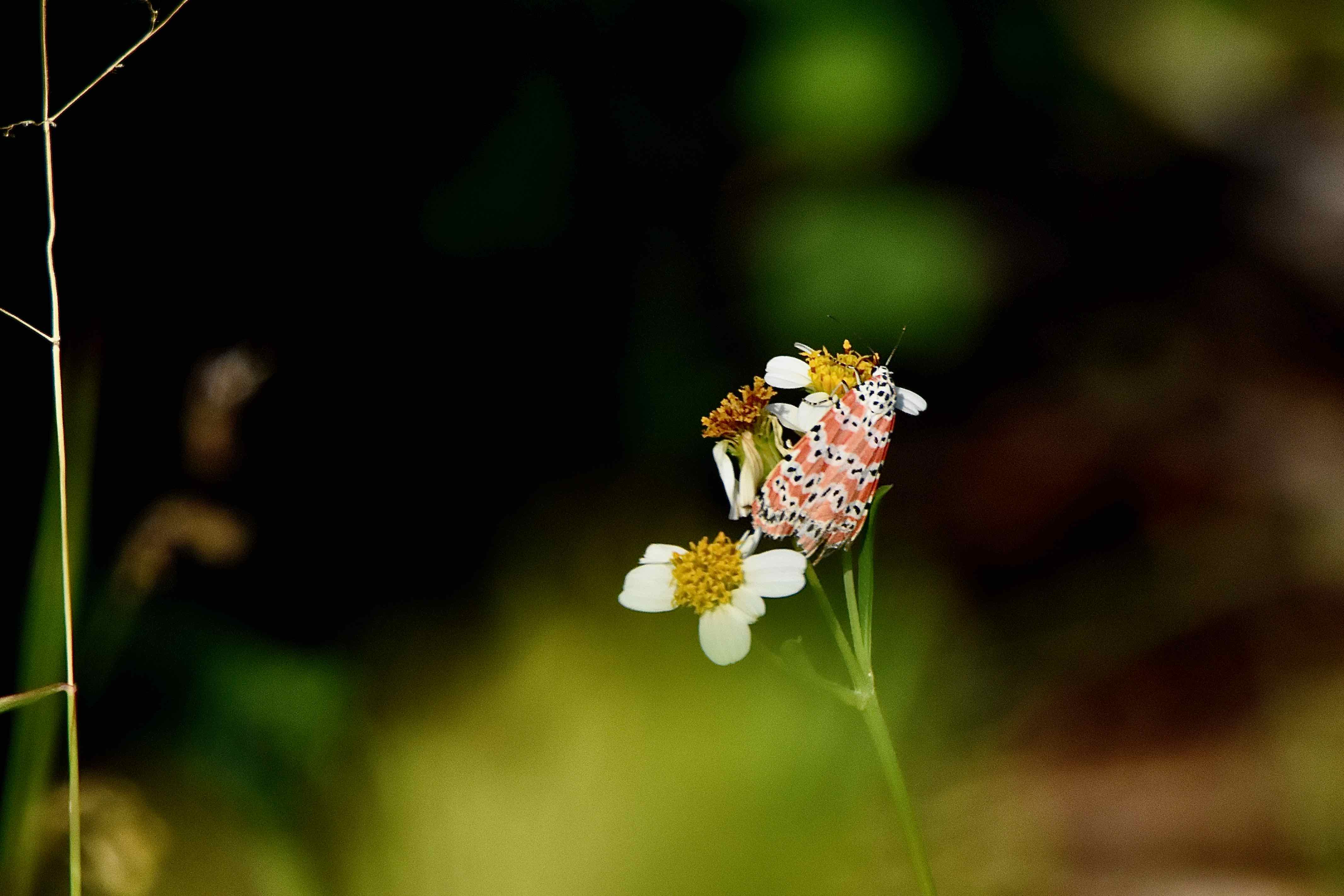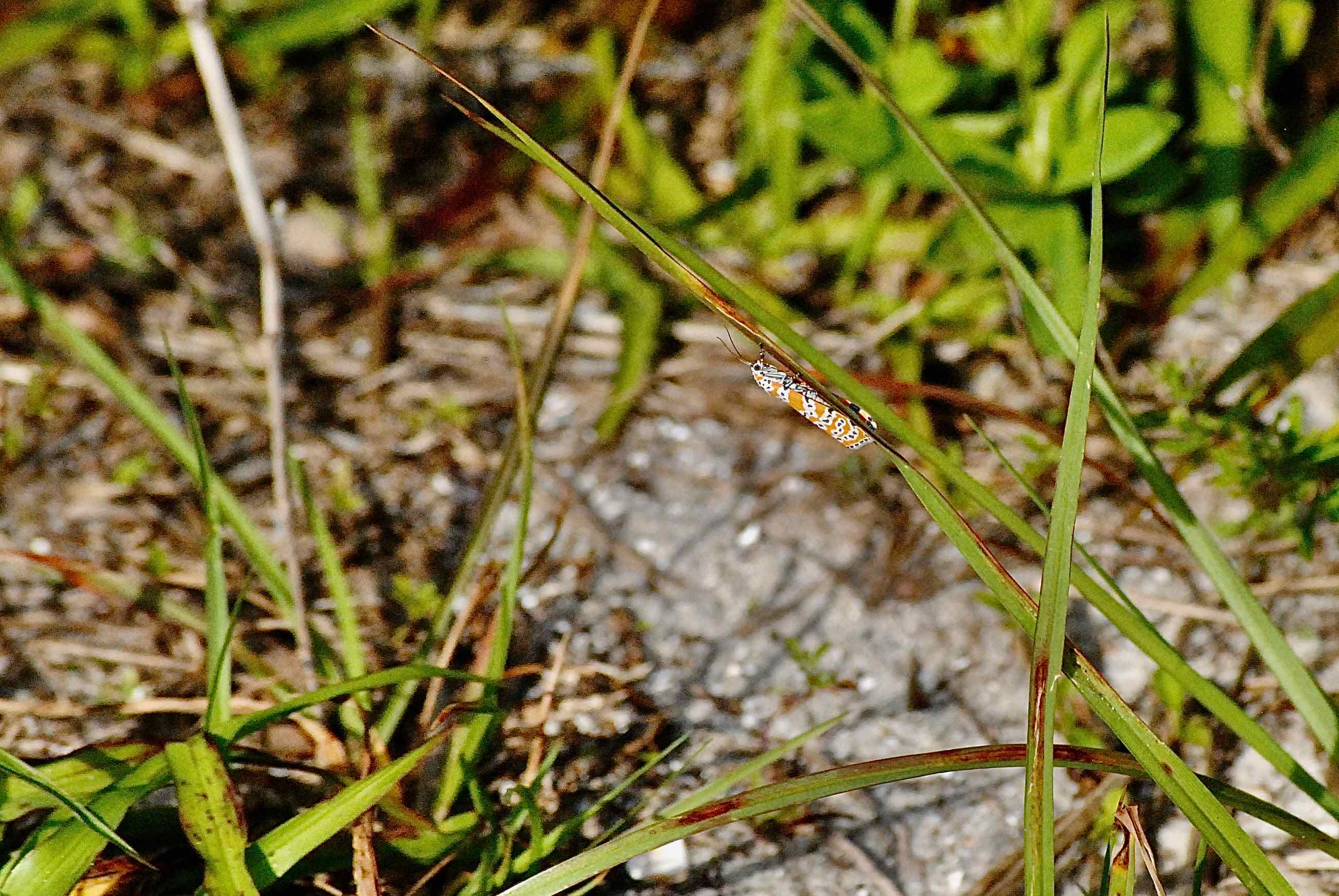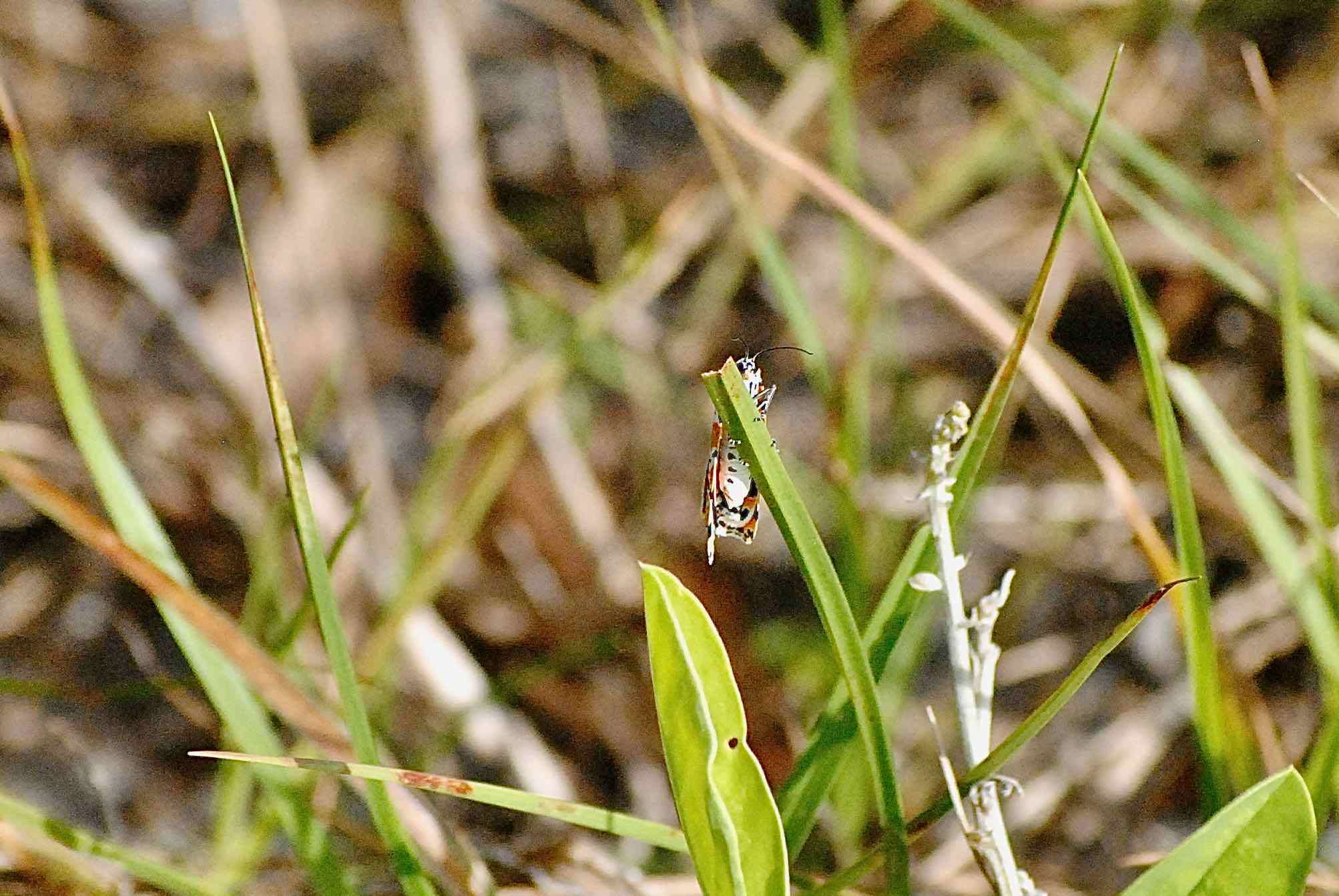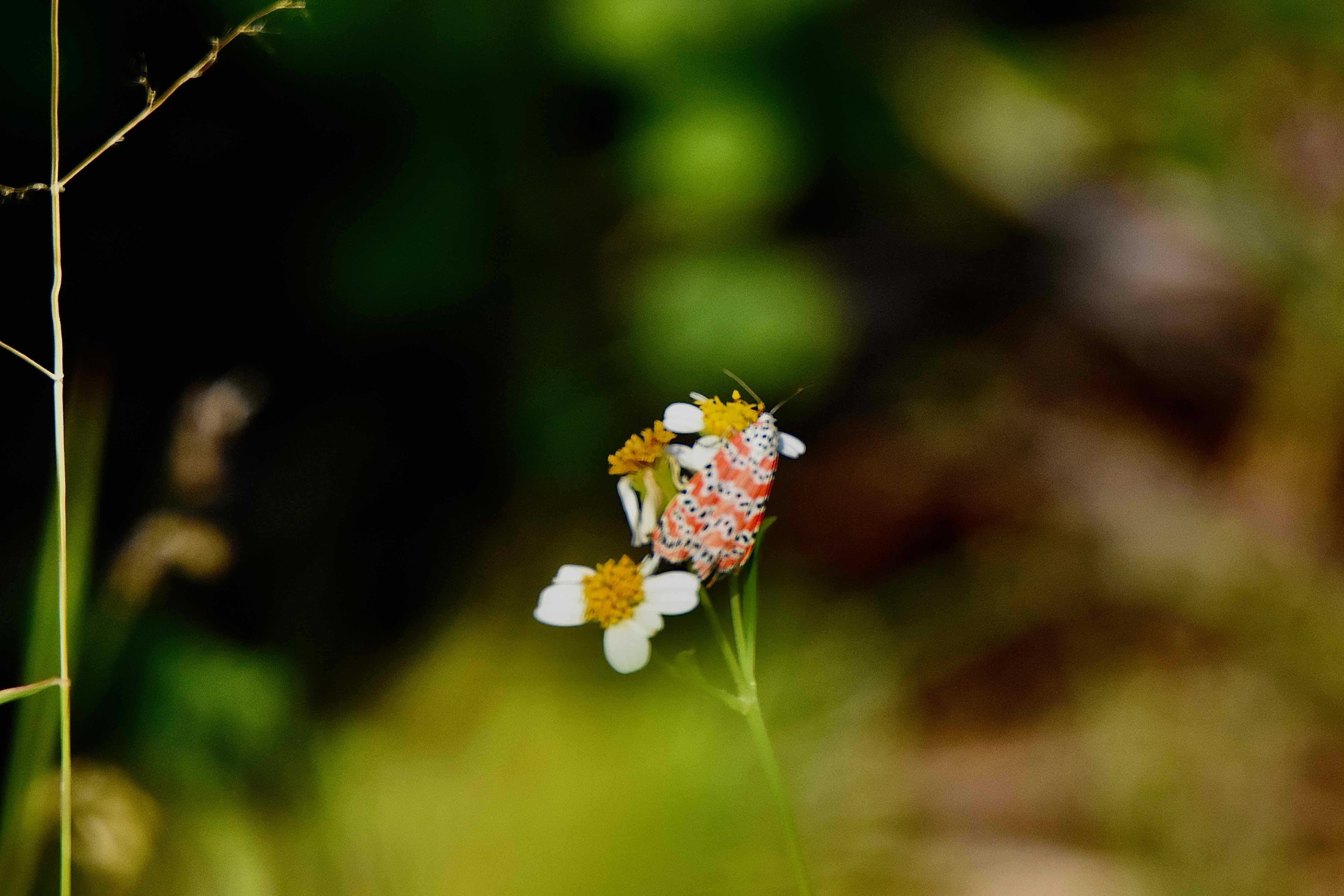
Rattlebox moth, photographed at Jonathan Dickinson State Park, Hobe Sound, Martin County, in May 2016.
Say one thing for this guy. In the world of moths where drab is the norm and midnight is midday, the rattlebox moth, Uthetheisa ornatrix, stands out for its colorful good looks.
The rattlebox is among Florida's more colorful moths — it appears in flight as kind of a salmon pink blur. And you can see that blur because of another unusual feature for a moth. It is diurnal, meaning it's active during the day rather than flittering by a porch light in the middle of the night.
There are different names that this bug goes by. Rattlebox moth is our favorite, because it reflects the relationship between the bug and the group, or genus of plants called Crotalaria, on which it depends for survival. Just like with milkweed butterflies like the monarch or queen, the color of the rattlebox moth is intended as a warning to potential predators that eating it will make you sick.
It gets the color and along with it, a poison, by eating various members of Crotalaria, also known as the rattlebox family. A bird eating this moth likely won't die but it will wish it had. And it's not likely to make the same mistake twice. As larvae, the moths munch on the leaves of Crotalaria species, all of which have pyrolizine alkaloids. Not only that, but when rattlebox moths reproduce, males transfer the alkaloids to their female partners along with their sperm. The alkaloids are transferred to the eggs, which, along with alkaloids from the female, make them toxic to predators as well.
Rattlebox moths live three weeks on average and females typically reproduce four or five times. The chemical contributions from their male partners makes it possible for the females to lay so many eggs with the killer compound.
They do have one major characteristic that's common to other moths: their wings fold in like a fan when they perch rather than up like butterflies.
Rattlebox moths can vary in their color patterns, so much so that when the great naturalist Carl Linnaeus first described them back in 1758, he split the moth into two separate species in the genus, Phalaena, based on their looks. More than 200 years later, the two were reclassified as one species, Utetheisa Ornatrix. The forewings, what you see when one perching, are a light pink with white bands filled with black spots; the hindwings, which are hidden, are a solid, darker pink or salmon edged in black. They're so dissimilar that when the wings are folded out like a butterfly, the rattlebox looks like a Frankenfly, two different bugs joined to one body. They're on the smaller side, with a wingspan that might reach an inch-and-three-quarters.
There are several species of Crotalaria in Florida that are exotics, non-native pests that would become full-fledged invasive menaces if it wasn't for the appetite of the rattlebox moth. Females lay eggs in clusters on crotalaria leaves, which become food for the newly hatched caterpillars. But soon, they stop with the leaves and start eating the plant's immature seed pods, which have a much greater pyrolizine content. That puts a heavy check on the crotalaria population. (There are native crotalaria species as well, rabbit bells being one, low rattlebox being another. But all in all, they're less desirable from the motn's point of view than the exotics.)
Rattlebox moths range as far north and east as Connecticut and as far west as parts of Nebraska and New Mexico and as far south as Florida. Up north, adults fly from July to September; here in Florida and other warmer parts of their range, rattlebox moths are in flight year round.
Other names: bella moth, ornate bella moth, calico moth and ornate moth. An alternative scientific name is Uthetheisa bella. They are members of Erebidae, a large family of moths.



